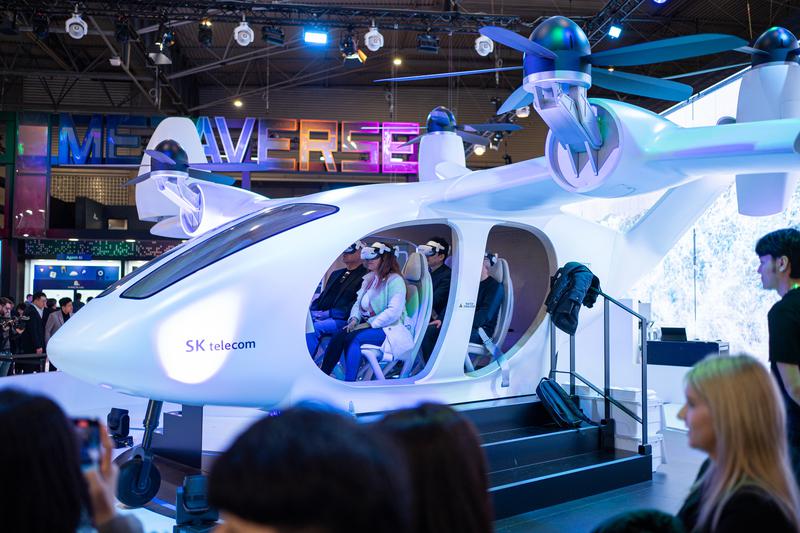1,200 km/h speeding pods and autonomous taxi drones: the future of transportation
International companies show off advanced mobility solutions at Mobile World Congress trade show in Barcelona

The future of transportation has been one of the biggest highlights at this year's Mobile World Congress.
International companies have come to the world's biggest mobile industry trade show to display their visions of future mobility, including a train-like capsule capable of reaching speeds of up to 1,200 km/h and an autonomous taxi drone.
The HyperloopTT project consists of a capsule that travels inside a vacuum tube at very low pressure and with magnetic levitation.
HyperloppTT's Vice President of Operations, Michael Hengst, explained to the Catalan News Agency that it will be a good alternative to planes for short and medium-distance trips. He makes the point that, when counting approaches, landings, and take-offs, the average speed of an airplane is only 650 km/h, meaning the Hyperloop capsules would end up going faster.
Hengst adds that his company's mobility solution would also be better than a lot of train journeys: "No one wants to be stuck on a train for seven hours, we are a very interesting alternative," he said.
The VP of operations says that ideally the Hyperloop would be installed around 6-8 meters above ground, as this brings various advantages. Land would not have to be divided so clearly between trains, cars, and other transportation, as road vehicles could pass beneath the Hyperloop infrastructure. Although, it could also be built underground depending on the circumstances.
If it is above ground, there is a huge advantage available in covering the infrastructure with solar panels. Hengst said that his company have "a huge solar park" that lets them generate "more energy than we use in a year."
Each capsule is designed to fit 26-48 people and the idea is that one departs for its destination every 40 seconds. "It's not like a plane that leaves every half hour or a train every hour," Hengst pointed out.
The company is happy that the European Commission is currently working on a regulatory framework for what Hengst describes as the "fifth mode of transport" after cars, trains, ships, and planes.
Autonomous taxi drone
South Korean firm SK Telekom has once again been one of the most eye-catching stands at this year's mobile tech show.
There, they let visitors try out the feel of the interior of one of their autonomous taxi drone prototypes.
The helicopter-like device is designed to act as a taxi without a pilot, and, according to the multinational, could start flying over the Korean capital of Seoul from 2025.
The device works with artificial intelligence, as explained to the Catalan News Agency by brand ambassador Elsa González.
The drone is "designed to be a type of taxi, helping us avoid other forms of transport like cars. You order the drone taxi and it brings you wherever you want," González said.
However, she pointed out that regulatory permits are still needed to take the device into the air.
The company's intention is for these devices to fly over the city and, through artificial intelligence, know where in the city they can and should land. In addition, SK Telekom want to add the possibility of finishing a journey to a final destination with an autonomous vehicle.